Do you have a question about the YASKAWA Varispeed G7 and is the answer not in the manual?
| Cooling Method | Fan Cooled |
|---|---|
| Series | G7 |
| Type | Inverter |
| Input Voltage | 200-240V AC, 380-480V AC |
| Output Voltage | Matches Input Voltage |
| Horsepower Range | 1 to 400 Hp |
| Output Frequency | 0 to 400 Hz |
| Control Method | V/f Control, Closed Loop Vector Control |
| Overload Capacity | 150% for 60 seconds |
| Switching Frequency | 1kHz to 15kHz |
| Braking Unit | Built-in or External (depending on model) |
| Communication Protocols | Modbus RTU, PROFIBUS-DP, DeviceNet |
| Communication Interface | RS-485, RS-422 |
| Protection Functions | Overcurrent, Overvoltage, Undervoltage, Overheating, Short Circuit, Ground Fault |
| Protection Class | IP20 |
| Ambient Temperature | -10°C to +50°C |
| Storage Temperature | -20°C to +60°C |
| Humidity | 5% to 95% (non-condensing) |
| Altitude | Up to 1000m without derating |
Crucial safety guidelines for handling inverters, covering delivery, installation, and wiring to prevent injury.
Details warning symbols and their meanings, emphasizing risks of electric shock and serious injury.
Provides applicable wire sizes, terminal symbols, and tightening torques for main circuit wiring, crucial for safe and reliable operation.
Details wire sizes, connectors, terminal functions, and precautions for control circuit wiring to prevent faults.
Describes the Digital Operator's displays, key names, and functions, including mode indicators and keys for operation and settings.
Provides an overview of the inverter's five operating modes: Drive, Quick Programming, Advanced Programming, Verify, and Autotuning.
Details step-by-step procedures for trial operation, including power supply voltage setting, power ON checks, and basic parameter settings.
Provides comprehensive tables of user constants, categorized by function (Setup, Application, Motor, etc.) and control method applicability, essential for configuration.
Explains methods for inputting frequency references, including Digital Operator, analog signals, MEMOBUS, and pulse train inputs.
Details methods for inputting Run Commands via Digital Operator, control circuit terminals (2-wire and 3-wire sequences), and MEMOBUS.
Outlines the four stopping methods: deceleration, coast, DC braking, and coast with timer, selectable via constant b1-03.
Explains acceleration and deceleration times, S-curve characteristics, and dwell functions for smooth operation.
Explains functions for improving motor operating efficiency, such as slip compensation, torque compensation, and energy-saving control.
Covers functions to protect the machine and inverter, including reducing noise, carrier frequency settings, and motor overload protection.
Details inverter protection functions like overheating protection for braking resistors and inverter cooling.
Explains functions for multi-function contact inputs and outputs, including switching operation modes and external fault signals.
Covers setting Digital Operator displays, multi-function selections, copy functions, and password protection.
Details Inverter alarm functions including fault detection, alarm detection, operation error detection, and autotuning error detection.
Lists potential errors during autotuning, their probable causes, and corrective actions, including motor data errors and PG issues.
Provides guidance for motor non-operation, covering scenarios like incorrect operation method, low frequency reference, or analog input errors.
Outlines items for periodic maintenance, emphasizing safety precautions like turning off power and waiting for charge indicator.
Lists standard inverter specifications categorized by capacity, including model number, output ratings, and power supply characteristics.
Offers precautions for selecting, installing, setting, and handling Inverters, including reactor installation and Inverter capacity selection.
Provides comprehensive tables of user constants, categorized by function (Setup, Application, Motor, etc.) and control method applicability, essential for configuration.
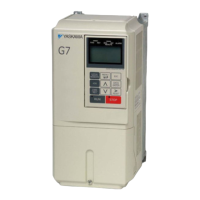

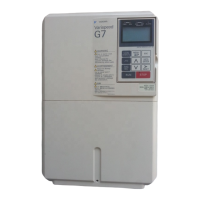
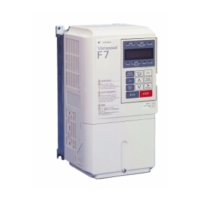
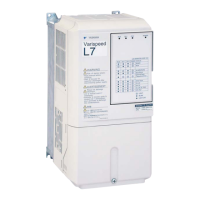
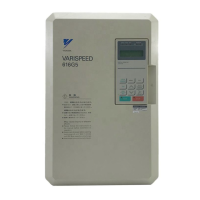
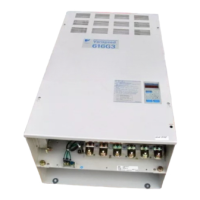
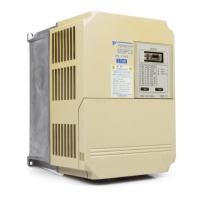
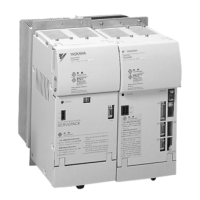

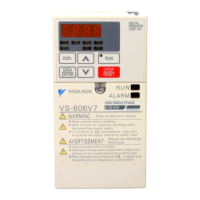
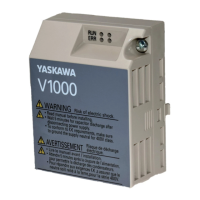
